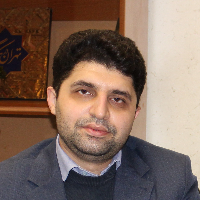s. bashiri
-
An extensive survey on phylogeny and pathology of fungi associated with the oak decline in Zagros forests located in Western Azarbaijan, Kurdistan, Kermanshah, Lorestan, and Ilam provinces, a large number of collected fungal isolates seventeen isolates morphologically resembled the members of Phaeoacremonium. Similar DNA fingerprinting patterns were generated for all isolates using M13 primer. Thus, one representative isolate (IRAN 4348C) was analyzed based on tub2 sequence data using maximum parsimony and neighbor-joining algorithms and identified as Phaeoacremonium tuscanicum. Pathogenicity was confirmed following Koch’s postulates on two-year-old Quercus brantii seedlings under greenhouse conditions. To our knowledge, it is the first time Ph. tuscanicum is reported from oak trees and confirmed as a pathogenic fungal species on Q. brantii in the world.
Keywords: Morphology, phylogeny, pathogenicity, tub2 -
امروزه فضای مجازی بر تمامی عرصه های اجتماعی، سیاسی، اقتصادی و فرهنگی جوامع موثر بوده و با توجه به ظرفیت هایی چون: سرعت، فراگیری، دسترسی دایم، تعامل دوسویه و چندسویه، فرامکانی و فرازمانی، توانسته به عنوان ابزاری موثر و اثربخش بر حکمرانی خوب مطرح شود.
هدفاین تحقیق در پی مطالعه نقش فضای مجازی و شبکه های اجتماعی به عنوان جدیدترین دستاورد آن بر وضعیت شاخص شفافیت به منزله یکی از مولفه های مهم حکمرانی خوب انجام شده است.
روشدر بخش مبانی نظری از روش توصیفی- تحلیلی و بهره گیری از منابع اسنادی و کتابخانه ای و در بخش پیمایشی از ابزار پرسشنامه استفاده شده است. جامعه آماری در این پژوهش، تعداد 389 نفر از دانشجویان دانشگاه آزاد واحد علوم و تحقیقات تهران بودند و از نرم افزار اس.پی.اس.اس-21 برای تجزیه و تحلیل داده ها استفاده شده است.
یافته هامهم ترین یافته های این پژوهش حاکی از این نکته است که فضای مجازی و شبکه های اجتماعی از طریق آگاهی بخشی، افزایش نظارت در جامعه و تعامل دوسویه میان دولت و مردم و انعکاس خواسته های آنان موجب بهبود و افزایش شفافیت در ایران می شود.
نتیجه گیریاین پژوهش نشان می دهد فضای مجازی در تقویت و ارتقای شاخص شفافیت در ایران نقش بسزایی داشته است.
کلید واژگان: حکمرانی خوب، شفافیت، فضای مجازی، نظارت، دولت الکترونیکNowadays, cyberspace is effective in all social, political, economic and cultural spheres of societies and due to its capabilities such as speed, acquisition, permanent access, mutual and multilateral interaction, spatial and supra-national has been able to be effective and effective tools for good governance.
ObjectivesThis research is conducted to study the role of cyberspace and social networks as the recent achievement on transparency index status and as one of the important components of good governance. Method;In the theoretical bases, a descriptive-analytical method is used, and the use of documentary and library resources, and in the survey part, a questionnaire is used. The statistical population used in this study was 389 students of Azad University of Science and Research Branch and spss21 software was used for data analysis.
ResultsThe most important findings of this study indicate that cyberspace and social networks can improve and increase transparency in Iran through awareness raising, increased surveillance and mutual interaction between the government and the people.
ConclusionThis study shows that cyberspace has an important role in enhancing transparency index in Iran.
Keywords: good governance, transparency, cyberspace, surveillance, electronic government -
Subcooling degree and surface roughness are two major parameters that have a considerable effect on boiling heat transfer. In the present study, the effects of subcooling degree on pool boiling heat transfer coefficient and surface temperature distribution are investigated experimentally. Tests are conducted for saturated and subcooled water with different subcooling degrees in the local atmospheric pressure (863 mbar) around a horizontal stainless steel cylinder with specific surface roughness. The test section is a pool with dimensions of 120×400×550 mm and test case is a circular cylinder with 80 mm length, 9 mm diameter and 0.794 μm average surface roughness. In this research, experiments are performed for the degrees of subcooling between 5.5°C to 45.5°C and for the heat fluxes between 0.31 kW/m32 to 125.62 kW/m. Results show that by increasing the degree of subcooling for a specific average surface roughness, average surface temperature is decreased and due to changes in the mechanism of heat transfer from nucleate boiling to natural convection, heat transfer coefficient is also decreased. In the region of natural convection, the variation of heat transfer coefficient with heat flux is low and when boiling process begins, this variation is more considerable. Furthermore, for lower heat fluxes (less than 5 kW/m), the temperature difference between upper and lower sides of the test case is less than 1°C which increases for higher heat fluxes so that for more than 100 kW/m2,it reaches to 6°C.Keywords: Subcooling Degree, Pool Boiling, Natural Convection, Heat Transfer Coefficient, Circular Rough Cylinder
- در این صفحه نام مورد نظر در اسامی نویسندگان مقالات جستجو میشود. ممکن است نتایج شامل مطالب نویسندگان هم نام و حتی در رشتههای مختلف باشد.
- همه مقالات ترجمه فارسی یا انگلیسی ندارند پس ممکن است مقالاتی باشند که نام نویسنده مورد نظر شما به صورت معادل فارسی یا انگلیسی آن درج شده باشد. در صفحه جستجوی پیشرفته میتوانید همزمان نام فارسی و انگلیسی نویسنده را درج نمایید.
- در صورتی که میخواهید جستجو را با شرایط متفاوت تکرار کنید به صفحه جستجوی پیشرفته مطالب نشریات مراجعه کنید.






